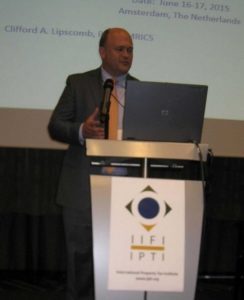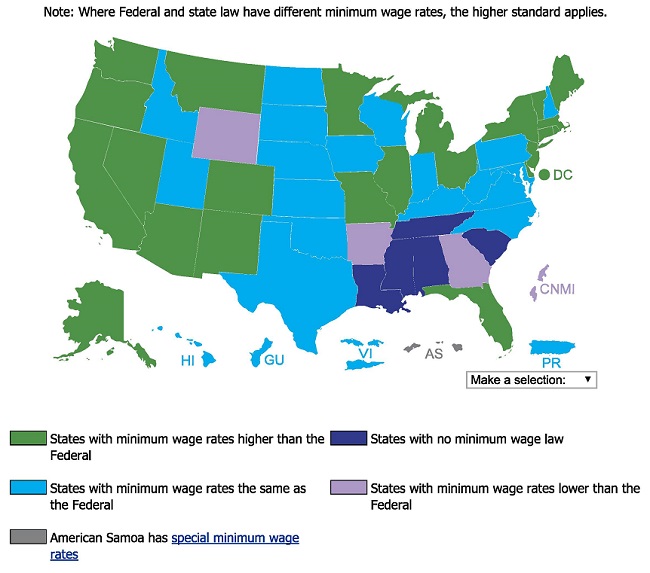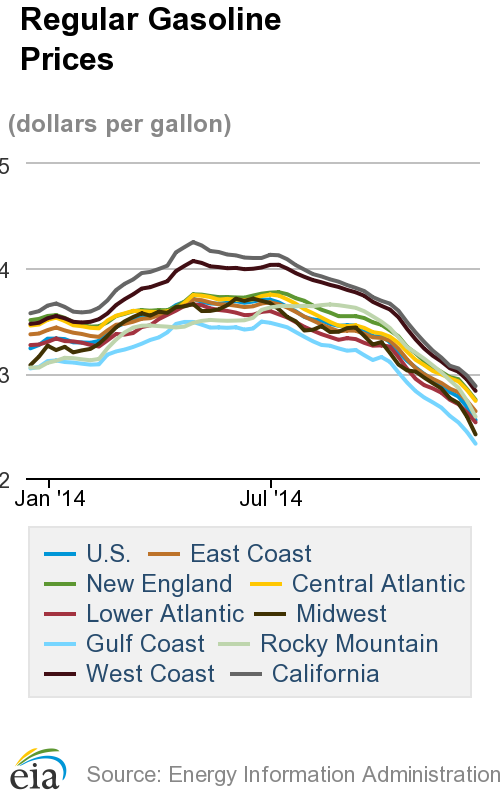
Cliff Lipscomb speaking at MAVS. Source: IPTI.
Amsterdam… what an awful place to have a conference! I’m kidding of course. This is my third trip to Amsterdam, and the city looks pretty much as it did the last time I was here (14 years ago when I was on my way to a regional science conference at the Rijksuniversiteit Groningen). I love visiting, and I’m always excited when my work brings me to such a diverse city.
The 10th Mass Appraisal Valuation Symposium (MAVS) kicked off June 16 with an introduction by Paul Sanderson, President of the International Property Tax Institute (IPTI). Welcome addresses were provided by Han Polman (King’s Commissioner, equivalent to a governor in the United States), who oversees the Dutch government’s real estate assessment entity, and Arri Hartog, Managing Director of Municipal Taxes of Drechtsteden.
Then, in a series of plenary sessions, attendees got an overview of the Dutch property tax system. Robbert Verkuijlen and Claudia Toet provided an overview of the property tax system. Property reassessments are done every year in the Netherlands, and assessed values have uses beyond the determination of property tax liabilities; assessed values are used to determine succession taxes, the depreciation adjustments for commercial buildings, and maximum house rents. By late 2016, the Dutch government will have data for all residential properties online (to include property characteristics and sales prices). The Dutch want to develop a “citizen-assisted mass appraisal” system (which ironically has the CAMA acronym most commonly interpreted to indicate “computer-assisted mass appraisal”) and maybe a feature like Zillow’s Zestimate (where property owners can update property characteristics if the data are incorrect).
In the next session, Marco Kuijper and Ruud Kathmann discussed in more detail how the Dutch system changed (in 2008) from a 4-year assessment cycle to a 1-year cycle. The cost of assessment is approximately 18 to 19 euros per property on a countrywide basis. The 2008 Act for Real Estate Assessment (Wet waardering onroerende zaken in Dutch) is called “Wet WOZ” locally. For non-residential properties, the Dutch government uses local rents coupled with a standardized calculation of the capitalization factor (aka “cap rate”) to determine property value. The speakers stated that “reproduction costs,” not replacement costs, are used on a uniform basis across all municipalities, and the quality control guidelines are under “peer review.” As an example of the 1-year cycle, the 2015 Dutch property tax bills are based on value as of January 2014. This change was done just in time, because the Dutch residential price index dropped 15% from January 2011 to January 2014. Of course, for those of us in the U.S. who have experience with millage rates, the Dutch government can maintain a constant level of property tax revenue by simply increasing the millage rates to compensate for the lower property values due to the reassessment.
Then, Arnold van den Berg and Arri Hartog discussed some valuation practicalities in the Netherlands. Their hook was the common phrase “Going Dutch,” which in the U.S. means you pay for your own part of a date or meal. The speakers used the phrase to mean sharing more appraisal-related data on mobile apps to facilitate data dissemination. Owners can view valuations and the underlying data used to establish the valuations online. The speakers suggest that this will improve citizen trust in government. Interestingly, I had a paper published on this topic last year.
Next, several speakers discussed some international perspectives in property tax systems, with an overview and subsequent foci on Singapore and Japan. Paul Sanderson provided an overview of the different property tax burdens in different countries as well as the “basket” of taxes levied in different countries. The Organization for Economic Cooperation and Development (OECD) in Paris collects data on property tax burden as a percentage of gross domestic product (GDP); for example, property tax burden was at 4.5% of GDP in the United Kingdom and at 3% of GDP the United States in 2012.
In addition, Sanderson spent some time discussing property tax exclusions, or exemptions. His primary example was Madison Square Garden, the famed arena where the New York Knicks play professional basketball. According to Sanderson, the government owns the arena and pays no property taxes! As a result, the opportunity cost of this tax exemption for the City of New York is approximately $50 million per year. This raises the question as to whether this tax exemption has served its purpose and should be eliminated.
Sanderson’s presentation also raises a second interesting question—does the property tax exemption of government buildings encourage higher space consumption relative to buildings privately owned? I personally don’t know of anyone who has conducted research in this area, but if you do, please leave a comment, as this is something I’d like to follow up on.

Jennifer Lin speaking at MAVS. Source: IPTI.
Next, Jennifer Lin discussed the Singapore property tax system. Recently Singapore went through a tax simplification process. In 2010, the challenge faced was 15 valuers (that is the term for appraisers used in countries around the world) for 1.07 million properties reviewed annually. Lin and her staff merged property tax notices and the actual tax bill into a single document, which not only eliminated paper usage but also decreased the objection rate (i.e., property tax appeal rate) to 0.6%.

Kaz Fujiki speaking at MAVS. Source: IPTI.
Finally, Kaz Fujiki and Haruyuki Okuno of the Japan Real Estate Institute (JREI) discussed Japan’s property tax system history and the property tax regime changes after the March 2011 tsunami. [You may recall from previous blogs that our firm has a relationship with JREI dating back a dozen years or so. The last time I visited was at JREI headquarters in Tokyo in 2013.] Japan’s property tax system changed after World War II because of work by American economists led by Carl Shoup of Columbia University. Japan has approximately 1,700 municipalities whose assessments are reviewed by equalization boards, usually on a 3-year cycle. The percentage of appeals is really low, partly because of the method used (depreciated replacement cost). Japan has land value survey data housed in the Ministry of Land and Transportation that is useful in determining land values (this is particularly important when an appraiser is using the cost approach to value). Also, each street segment has a benchmark land value (yen per square meter) based on GIS characteristics (e.g., road frontage and depth).
Okuno then discussed the property tax issues faced by the country in the aftermath of the tsunami. In particular, Okuno discussed how property tax abatements were determined in areas affected by the tsunami. After the tsunami, property taxes were waived for affected properties, and the national government offered compensation for the property tax revenues lost at the local level; this practice will continue until 2016, when partial compensation of property tax revenue differences will be made going forward. Land reassessments in the affected areas in eastern Japan have been based on damage levels, which form a de facto value gradient because of the way the damage from the tsunami occurred.
Finally, my presentation was in the final time slot of the day. I discussed how the technique known as random forest regression can be used to identify unusual rules for limiting the data used in automated valuation models (AVMs). I received extremely good feedback. This is the first time I have attended a conference where my presentation was mentioned several times in others’ presentations the following day. I guess I need to stick to the more abstract topic titles (random forests), which, by the way, has nothing to do with the environment or trees.
Stay tuned for my second blog post from the IPTI 10th Mass Appraisal Valuation Symposium in Amsterdam in the coming days.





Recent Comments